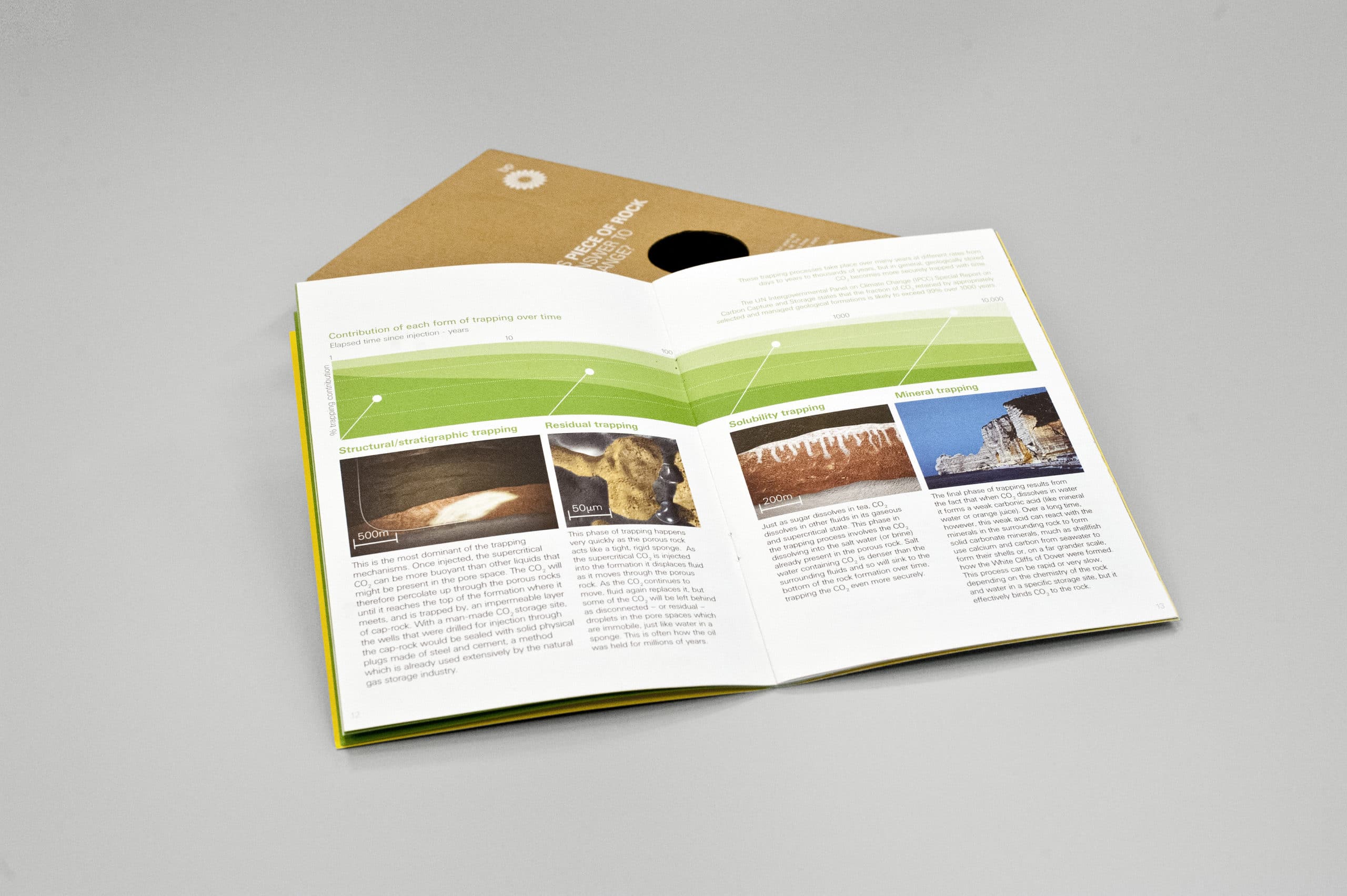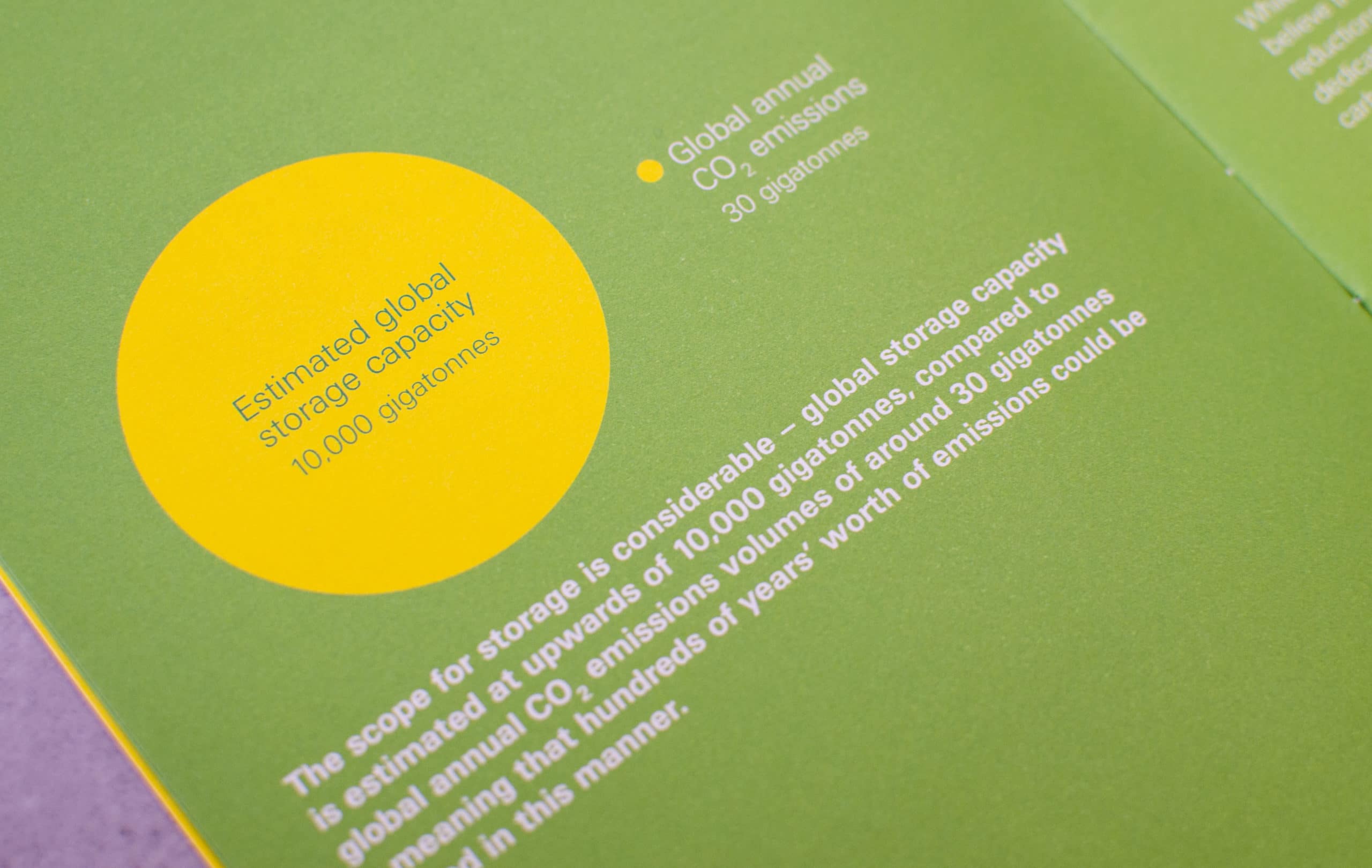



Challenge
CO2 Capture & Storage (CCS) was a relatively new and misunderstood technology. In particular, it is quite hard for people to visualise how carbon dioxide captured from industrial processes can be stored safely deep underground. A common misconception is that it floats in a vacuum or is stored in a cavern and might leak to the surface. Our task was to help BP to dispel this myth and to ensure better understanding of CCS among NGOs, regulators, government bodies and, in many cases, staff within BP’s own divisions.
Insight
At depths of 800m+, CO2 is compressed to a level whereby it becomes almost liquid in form. It permeates the microscopic pore spaces in sedimentary rock, a little like water in a sponge, and remains there. We believed that we could create something to demonstrate this in a very simple and interactive way.
Action
We created a science pack containing a piece of specially-cut sandstone and an information booklet. By letting droplets of water fall onto the rock, it is possible to show how easily it is absorbed and stays in the rock. The pack provides more information. This very simple device helped to capture the essence of CCS in a way that hundreds of technical papers, diagrams and videos had often struggled to do.







